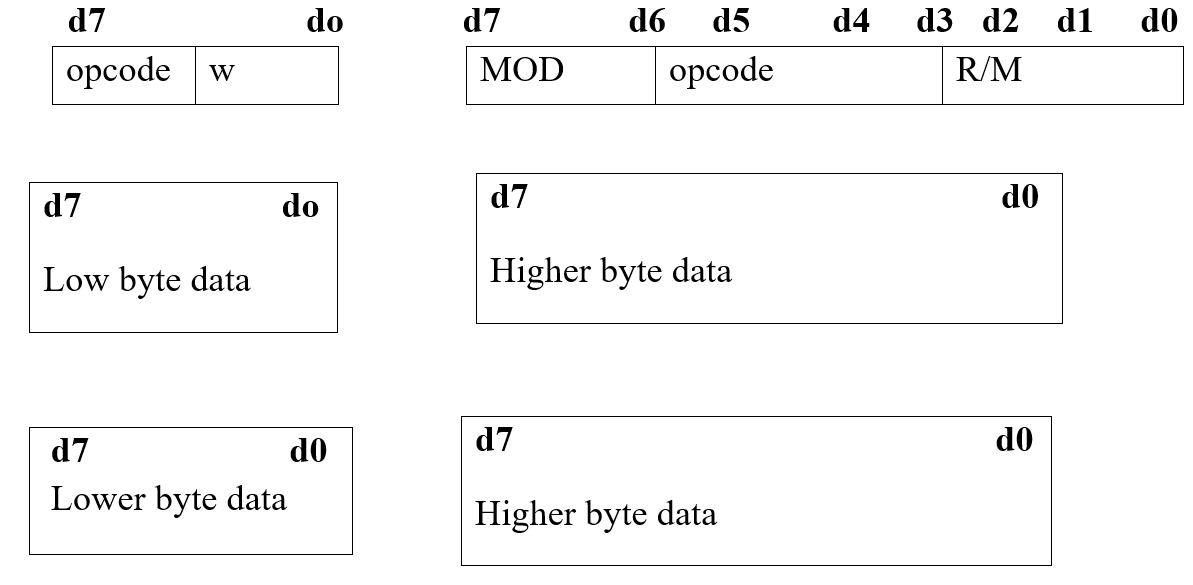Home »
Embedded Systems
Types of General Instruction Formats in 8086 Microprocessor
8086 Microprocessor General Instruction Formats: In this tutorial, we will learn about the various general instruction formats in 8086 Microprocessor.
By Uma Dasgupta Last updated : May 15, 2023
8086 Microprocessor - Types of General Instruction Formats
The following are the 6 general instruction formats in 8086 Microprocessor:
1. One byte instruction
This is only one byte long and may have implied data and register.
2. Register to register
This instruction is 2 byte long. First byte specified opcode and width(w) of opcode and second byte specified register operand and R/M field.

Here, MSB - Most significant bit and LSB - Least significant bit.
3. Register to/from memory with no displacement
This format is also 2-byte form and similar to the register except the MOD field.
4. Register to/from memory with displacement
This is same as the third one having one or two additional byte for displacement.

5. Immediate operand to register
In it first byte as well as three bits from the second byte which are used for the register field. In case of register to register format is reserved for the opcode. It also contains 1 or 2 bytes of immediate data.

6. Immediate Operand to memory with 16-bit displacement

Opcode-microprocessor, Assembly Language
Opcode have single bit indicators their significance is as follows -
Conclusion
In the above article, I have discussed the different instruction formats of the microprocessors briefly, with relative diagrams also. As I said earlier at the beginning of this article also that this topic of computer system organization is very important from the examination point of view and also the base of your knowledge about computer architecture. For further queries shoot your questions in the comment section below!